The confidence of brutalist office extensions
On 18 September 1982, the Governor of New South Wales, His Excellency Air Marshal Sir James Rowland AC, KBE, DFC, AFC, opened the new brutalist style office extensions for Campbelltown City Council.
Gosford architects Grenfell, Fraser, and Associates designed the office extensions and, when combined with the 1964 building, created one of the most important modernist precincts in the Macarthur region.
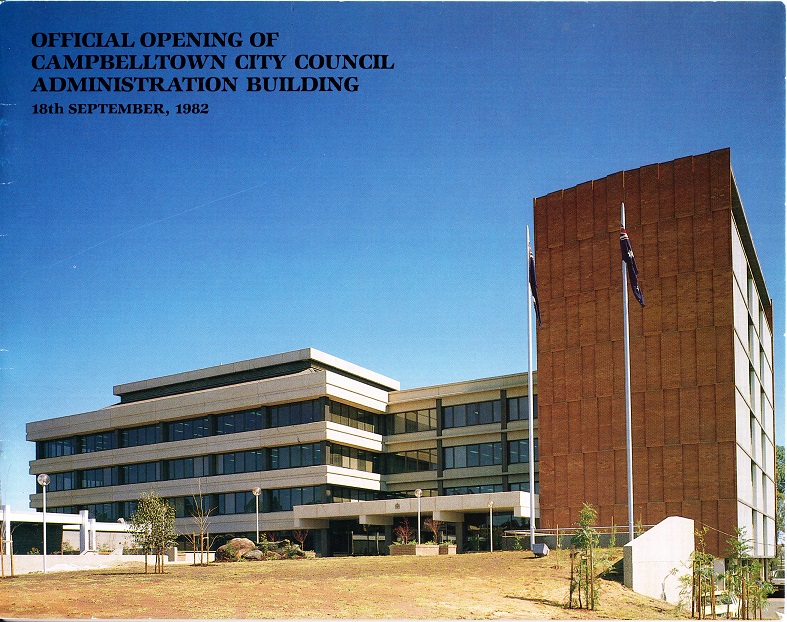
Unprecedented growth
Mayor Thomas stated at the official opening that the city had undergone ‘unprecedented’ growth and embraced ‘enormous changes’ since 1964. (Official programme)
The city’s population growth had grown from 24,000 (1963) to 43,000 (1974), and by 1980 was 120,000.
The council’s administration was ‘strained to the limit’, and there was a risk of fragmentation of council departments. The architects recommended a new single building to accommodate council staff to avoid this.
The architects presented three sites for the council’s consideration: the existing civic centre site, Camden Road opposite the Campbelltown Catholic Club, and the Macarthur Regional Growth Centre.
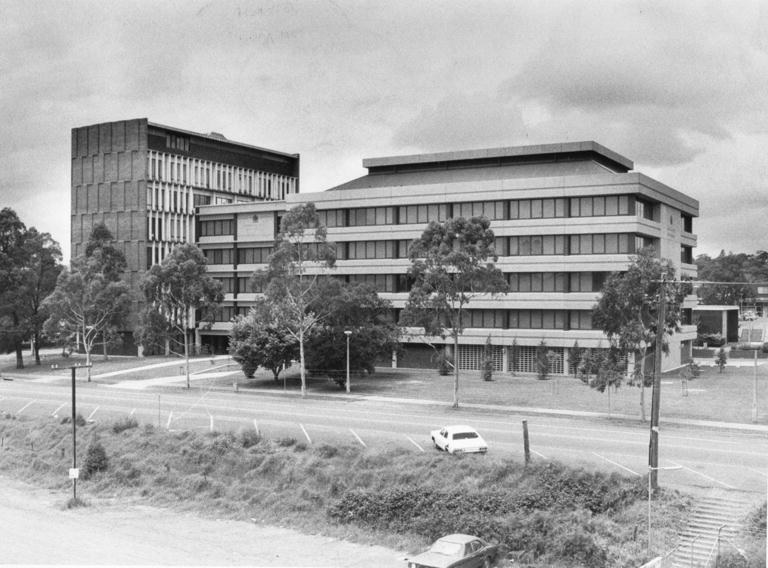
Moral obligation
After considering the three options, the council felt it had a ‘moral obligation’ to the existing Queen Street commercial precinct to remain at the civic centre site.
The new office building would act as an ‘anchor of confidence’, and the site would remain as the northern gateway to the commercial precinct. It would set a standard for future development in the area. (Official programme, 1982)
The council requested the architects design a ‘four-storey administrative building’ of around 2000m2 with an associated pedestrian plaza, landscaping and parking within the civic centre precinct.
In 1980 the civic centre precinct consisted of the 1966 single-floor community hall, the 1971 single-storey library building, a single-story women’s rest centre, a service station, the former fire station and a two-storey ambulance station. (Official programme, 1982)
The council needed to acquire the service station on the corner of Queen and Broughton Streets to complete the project.
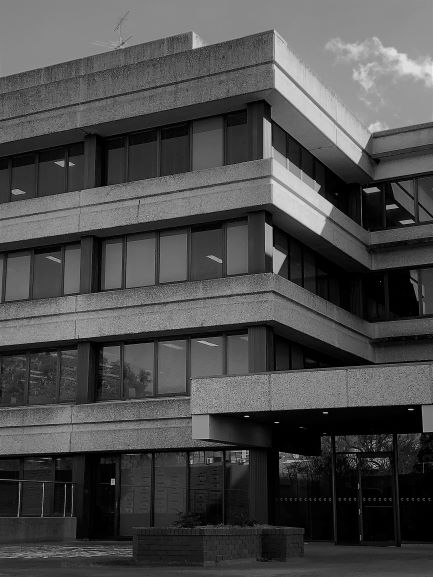
Dominant form
The primary design constraint on the civic centre site was the 1964 office tower of 1400m2 containing the council chambers and the administration offices. (Proposed Civic Centre Development, Grenfell, Fraser and Associates, 1980)
The building completely dominated the precinct and was ‘considered as the major visual element in any design’ because of its height’. The architects described it as a “high rise” curtain wall construction with external sun shading’. (Proposed Civic Centre Development, Grenfell, Fraser and Associates, 1980)
Architects Grenfell, Fraser and Associates felt that the new building extension had to integrate with the 1964 office tower in a functional and aesthetically pleasing fashion.
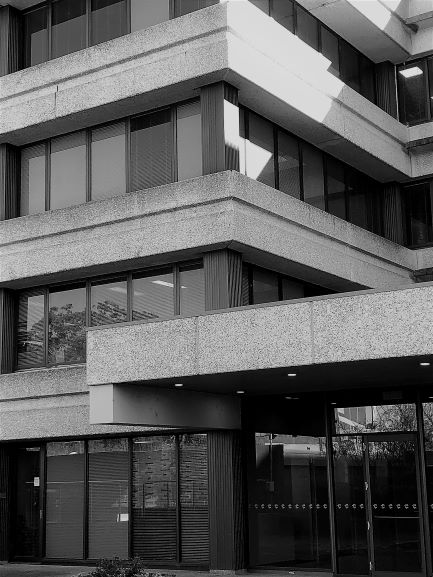
The spirit of the past
The architects stated that the design of the new building extensions and its ‘scale, proportion and detailing’ recognised ‘the legacy of the district’ :
‘The “colonial” pitched roof on the new extensions reflects the graceful simplicity of colonial architecture, and the simple proportions, “depth” façade detailing and pitched roof echo the features of “old” Campbelltown buildings’. (Official programme, 1982)
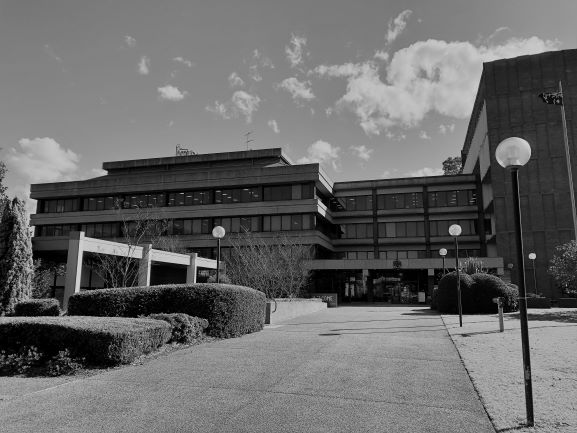
The building design inspired Mayor Thomas to draw on the past and ‘old Campbelltown’ as an inspiration for his address.
The new building was a metaphor for the area’s pioneering spirit.
The mayor stated that the new building illustrated how the spirit of the Campbelltown pioneers had not ‘suppressed the basic community character of Campbelltown’s early days’.
‘The spirit of the hardy pioneer bred of early settlers is woven into the fabric of our history and community life of today’, he said.
‘The City of Campbelltown has an ancient heritage in terms of the nation’s history, and this is being matched by a vital modern record of achievement’, said the mayor.
Mayor Thomas said
The wisdom and vision of another progressive Governor of this State, Lachlan Macquarie, almost 160 years ago, formed the nucleus of the closely-knit community which continues to grow in size and stature. The spirit of the hardy pioneer breed of early settlers is woven into the fabric of our history and community life of today. (Official programme)
Scale, proportion and detailing
The new office building was set at the rear of the civic centre site and kept a ‘lower profile to Queen Street, consistent with the general two-storey nature of the older buildings’. This design provided ‘an intermediate scale’ to help its integration with the existing higher 1964 building. (Official programme, 1982)
The building materials for the project ensured that the external finish blended ‘aesthetically with existing buildings and landscape and are architecturally pleasing’, and the ‘finishes are dignified, tastefully chosen and dignified’. (Official programme, 1982)
The proposed building used reinforced concrete as the main structural element, with ‘precast concrete with exposed aggregate finish’ to the exterior walls with anodised aluminium window frames. The internal walls were concrete blockwork with cement rendering.
The new design ‘provide[d] a building of similar bulk possessing a horizontal fenestration opposed the vertical nature of the existing building’ to act as a ‘counterfoil’ to the 1964 office tower. (Proposed Civic Centre Development for Campbelltown City Council feasibility study. Grenfell, Fraser and Associates, 1980)
At the end of the design phase, the architects believed the proposed scheme was both ‘aesthetically and materially adequate’ and ‘integrated functionally and aesthetically’ with the civic auditorium. (Proposed Civic Centre Development for Campbelltown City Council feasibility study. Grenfell, Fraser and Associates, 1980)

Brutalist style
The monolithic presentation of the office building extension with a rigidly geometric style and large-scale use of poured concrete was representative of brutalist-style architecture.
Brutalism grew out of the early 20th-century modernist movement that is sometimes linked with the dynamism and self-confidence of the 1960s. The characteristics of the style are straight lines, small windows, heavy-looking materials, and modular elements with visible structural elements and a monochromic colouring.
The brutalist style appeared in the post-war years in the United Kingdom and drew inspiration from mid-century modernism. The style represented the new town movement and appeared in modernist UK cities like Milton Keynes. Brutalism was common in the Sydney area in the late 1960s and 1970s and an integral part of the 1973 New Cities of Campbelltown, Camden, Appin Structure Plan.
![The New Cities Plan 1973[1]](https://camdenhistorynotes.com/wp-content/uploads/2016/07/the-new-cities-plan-19731.jpg)
Consequently, the Campbelltown area has several brutalist-style buildings, including Airds High School (1974), Glenquarie Shopping Centre (1975), Campbelltown TAFE College (1981), Macarthur Square (1979), Campbelltown Hospital (1977), and Campbelltown Mall (1984).
Conclusion
The new 1982 office extension reflected how the winds of change from population growth had reshaped the Campbelltown area since the construction of the 1964 modernist office tower.
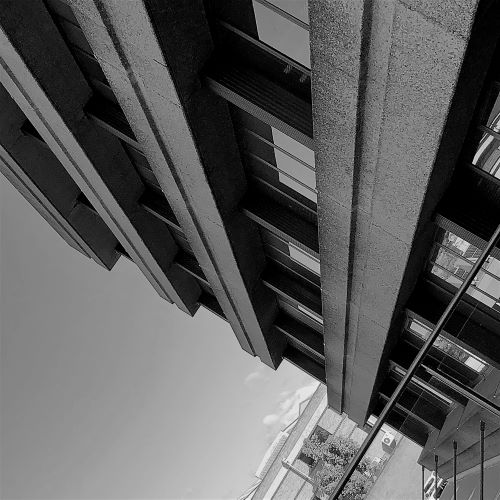
Acknowledgements
The author would like to acknowledge the assistance the local studies librarians at the Campbelltown City Library provided in completing this blog post.
Updated on 8 May 2023. Originally posted on 10 June 2020.


You must be logged in to post a comment.